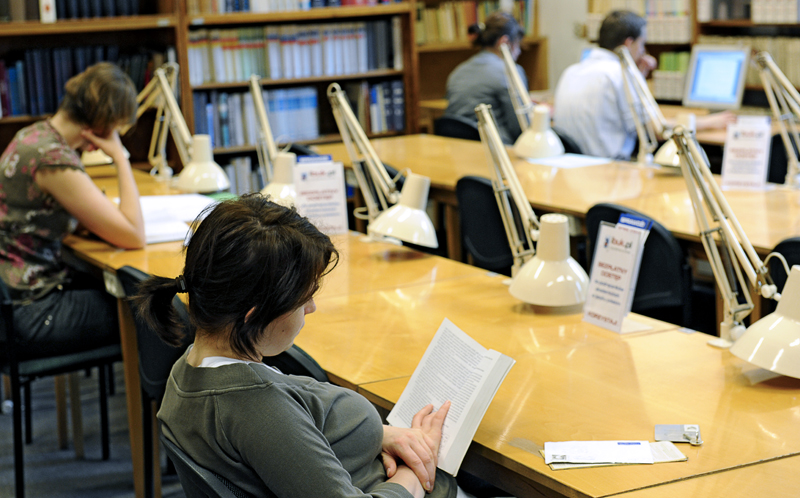Not only after graduation, many people face the question “What to do?”, Whether to continue studying at the university. Going to work or combining both training and work. Many have to think about getting a higher education already far from a young age due to life circumstances. Modern educational institutions always go towards everyone and offer convenient forms and methods of study at the university. Consider what they can be, what are the advantages and disadvantages of a particular form of study at a university.
Traditional full-time
Among the main forms of training at a university, one can name full-time (full-time) and part-time. They are considered traditional.
What is full-time study at universities? This form of training is a classic form of knowledge acquisition not only in our country, but throughout the world. Full-time students gradually receive a range of knowledge in the specialty they study in by attending direct lectures and communicating with teachers on a daily basis. Full-time study is very similar to continuing school, homework is also given here.

Designed full-time for periods of four to six years. When studying in a specialized specialty, the period can be reduced to three years. With this form of study at a university or technical school (college), weekends and holidays, as well as holidays after passing the session, are provided.
In addition to attending lectures and seminars, laboratory and examinations within the walls of the university, full-time students have time to visit libraries, as well as conferences, which contributes to a deeper assimilation of educational material and successful study. The additional knowledge acquired through independent study of books and when attending conferences is usually useful to students during independent work that a teacher can conduct.
Also, training in many universities in the last courses of obtaining a specialty provides for familiarization, pre-diploma and industrial practice at enterprises of the student’s choice, at the destination of the educational institution or in special educational enterprises.
Positive and negative sides
Among the main advantages of the full-time (full-time) form of study at the university are:
- An opportunity to get in-depth knowledge in a specialty.
- Many universities provide a hostel to nonresident students.
- Students in the classical sense of the word with the resulting bright, young life, participation in student holidays and events.
- The possibility of obtaining scholarships on the condition of training on a budgetary basis and obtaining good grades, and with excellent study, an increased scholarship is provided.
- In full-time, young men can receive a respite from compulsory military service. But only if this delay was still granted to him. At the age of 18 and receiving the first deferment, the second is not provided, although the training is still over.
- Many employers prefer to hire a full-time specialist because of a more detailed study of subjects (according to estimates, of course).

Considering the disadvantages of full-time study, it can be noted:
- Lack of full-fledged opportunity to work and earn money.
- Full-time tuition on a paid basis is the most expensive of all forms of organization of study at a university.
- Not all theoretical knowledge corresponds to the real situation in the work process at the enterprise.
- The absence of any work experience in the specialty, which is often requested by employers.You may first have to go the trainee path and receive some time different from the desired salary.
Correspondence
Another very common form of teaching students at the university is the correspondence form, in which most of the teaching material is mastered by students on their own, the institution is usually visited during the examination session. Typically, education by this method of training is a little longer and is 5-6 years. Upon receipt of a second education in a specialized specialty, the period of study can be reduced to 3-4 years.
Universities with correspondence courses can organize it in different ways. Everything remains at the discretion of the administration. For example, in many Moscow universities with extramural studies, so-called “weekend groups” have been adopted. Classes in this case are held once a week throughout the year, to study the course of the subject they carry out a “knowledge slice” in the form of an exam or a test.
The classic version of distance learning is even more common when, during a session, which usually lasts several weeks, in universities with correspondence courses, teachers give installation materials in short lectures at the installation lectures and then take tests and exams. Studying in absentia, between sessions, students are given control tasks, essays, a list of literature to be studied, etc., which they are obliged to prepare for the start of the session.
Disadvantages and advantages
Many mistakenly assume that it is enough to pay tuition and attend exams at the correspondence department. But in fact, if your real goal is to gain knowledge, not “crusts,” then you will have to devote time to self-organization and self-study.

In absentia not only young people can study, but also people with sufficient experience, for whom the question arose of obtaining higher or second higher education.
Among the obvious advantages of extramural studies at the university are:
- The possibility of combining education and main activities, work or childcare.
- The ability to master theoretical knowledge and apply them in practice (at work).
- Unlike full-time, there is no age limit for admission.
- Tuition is much lower than full-time.
- Labor law provides for study leave for the duration of the sessions and tuition fees. For this, the university must provide the student with a certificate-call.
- Part-time studies are often preferred by people as additional education who already have one diploma of education.
The disadvantages of the correspondence training system may be:
- Education can last longer than full-time education.
- High self-organization is necessary for mastering knowledge in the process of learning. Not all people are given this quality.
- Lack of deferment from the army for young people.
- Some employers do not consider correspondence graduates as specialists with in-depth knowledge.
Part time
Having talked about the most popular types of training in universities, we turn to the less known, but noteworthy forms of training. Full-time part-time study at the university originates in the Soviet years. When in the post-war period there were not enough specialists with education (even with full secondary education) - Soviet people usually finished 7-9 grades and went to the factory, the so-called evening form of training was designed to correct this situation in the country. It was possible to work during the day, and to study for free in the evening - there would be a desire.

At present, the evening form of study at universities is a mixture of full-time and part-time forms of study, when in the evening about 2-4 days a week students attend lectures with subsequent tests, exams and tests. Most of these are weekdays, but teachers can postpone classes to weekends, coordinating this with students.Classes begin at 18-19 hours, and end no later than 22-00.
As well as correspondence students, full-time students are given essays and tests for independent implementation. Due to the fact that academic hours with this form of training are still less than full-time, the duration of study increases by about six months or more. At the same time, the age of the student is not important when entering the university for an evening education system.
Advantages and disadvantages
Before deciding to go to full-time study, it is necessary to carefully compare the positive and negative aspects of such training. As experience shows, the evening learning system will require a student a lot of physical and moral strength. After all, much needs to be done both at work and at school. It is necessary to prepare for the fact that the study schedule and work may not coincide. Not all employers are ready to let an employee go an hour early to pass the set-off. It is better to coordinate this issue with the employer and to warn him in advance about your desire to study in the evening.

The disadvantages of such a training system include:
- Frequent physical and mental fatigue.
- Permanent lack of sleep.
- Constant problems both in study and at work, lack of time.
- Lack of time for personal life or a favorite hobby.
- Young men of military age have no deferment from the army.
- Nonresident students should not rely on the provision of places in the hostel.
But, fortunately, there are pluses to getting an evening education. These include:
- Pretty low passing score.
- Tuition is more affordable (compared to full-time study).
- Enough late admission. This will allow you to first try yourself in full-time education, and only then apply for full-time correspondence.
- The possibility of combining study and work, as many pay for their studies due to their work.
- The legislation provides a package of benefits (not applicable to all employers): paid study leave for the duration of exams (up to 50 days a year), 4 months of leave for writing, protection of a diploma and final exams, as well as a shortened working day (up to 7 hours) on the last 10 months of study.
Remotely
The next modern form of education is distance learning using modern means of communication. Simply put, for training, a student needs a personal computer with access to the global Internet. Universities with distance learning usually give students educational material in the form of lectures, special programs, as well as webinars.
The modern development of high technologies is gradually leading to the fact that this form of education is increasingly in demand and popularity. Recently, many commercial and state universities with distance learning have begun to appear. A flexible and convenient training schedule attracts applicants most of all when choosing such a training system. There is also almost no problem of finding sources of educational literature - a student can receive all textbooks and material by e-mail.
Thanks to remote technologies, any universities with a distance learning form located anywhere in the country and even the world have become available. However, many people think that learning remotely means that the training will not be very high quality in comparison with other forms of training, and the knowledge learned through the Internet will be only superficial. This is far from the case. At the state level, resolutions have been adopted that equate distance learning with other educational systems.

Of course, this form of training is quite new and therefore is still developing in our country, but since 2013, the requirements for creating conditions for the use of e-learning have been included in the structure of state educational standards.
Advantages and disadvantages
As already mentioned above, distance education is convenient for many with a convenient schedule. You can study at any time of the day or night. But this is not all the advantages of such a training system. They also include:
- Combination of training with the main activity. Education using remote communications is equally accessible for workers, moms on maternity leave, people with disabilities or in custody.
- The ability to master knowledge in an individual mode, without fear of falling behind classmates. For example, a lecture on an incomprehensible topic can be reviewed several times, ask the teacher questions by mail. The main thing here is to successfully pass the intermediate and final certification.
- Training can be carried out anywhere - in an apartment, office, having gone on vacation or living in rural areas of remote areas. All you need is access to the worldwide network and your desire.
- Such training is often used by employers to improve the skills of their employees or take any courses.
- The quality of education received remotely is not inferior, and sometimes surpasses traditional educational systems. The student independently studies the educational material, which means that he remembers better. If the student also works on the profile, he has the opportunity to put knowledge into practice.
- In financial terms, distance learning is more accessible than traditional full-time. Also, the budget savings include the absence of the need to pay for accommodation and travel.
- The absence of the problem of providing the student with educational material.
Considering the disadvantages of such training, it can be noted:
- Many cannot afford to motivate themselves to independently study disciplines. High self-organization and a desire to learn are needed.
- The distance system is good for individual training, but communicative skills do not develop and form teamwork skills at all.
- There is no deferment from the army and no scholarship paid.
- There is no opportunity for practical exercises. Such training is not suitable for many specialties because of this. For example, they do not remotely train a doctor or teacher.
- To make sure that the student passes the exams on the final certification on their own, they can invite him to the university, since there is a problem of user identification.
Interactive
Opposite to distance learning systems are interactive forms of study at a university. The very concept of “interactive” means interaction, conducting active conversations and discussions. This is an interactive training, involving intensive communication between the teacher and the student.
Interactive methods differ from traditional ones in that in such classes the disclosure and development of personal and professional potential occurs through the systematization and analysis of information. During interactive learning, the student learns to formulate his opinion, express his thoughts, lead a discussion, listen to the rest and respect someone else's point of view.
Interactivity is manifested in such types of training as teamwork (in pairs, groups or teams), role-playing and business games, discussions, working with various sources of information (lectures, books, museums, the Internet, etc.), presentations, trainings, various polls and interviews.

Interactive forms of training at the university meet the requirements of the modern information world and are necessary forms of training for the effective training of competitive and intelligent specialists in various fields.
Externate
There is another form of training in universities - this is the passage of an accelerated course of study, called "externship". External studies suggest that a student should independently master the educational program of an educational institution, which subsequently conducts certification and the issuance of a diploma.That is, the educational institution completely exempts itself from giving the student lecture hours and educational material.
For a year, a student can take no more than twenty disciplines in accordance with the requirements of the state educational standard. A big plus of such training is a quick way to get a qualification or education. But a significant drawback of external studies is the high complexity of independent study of the curriculum.
